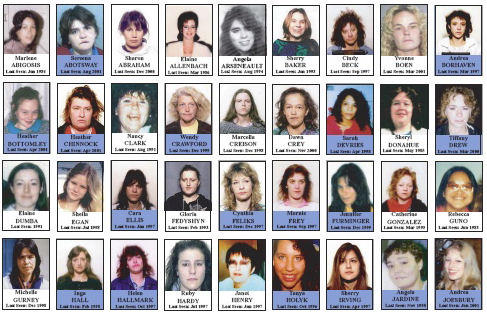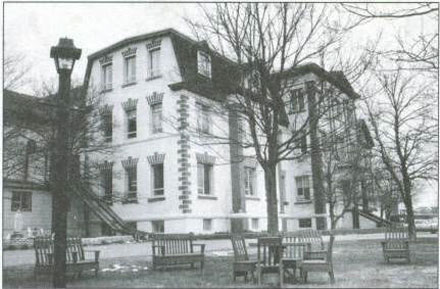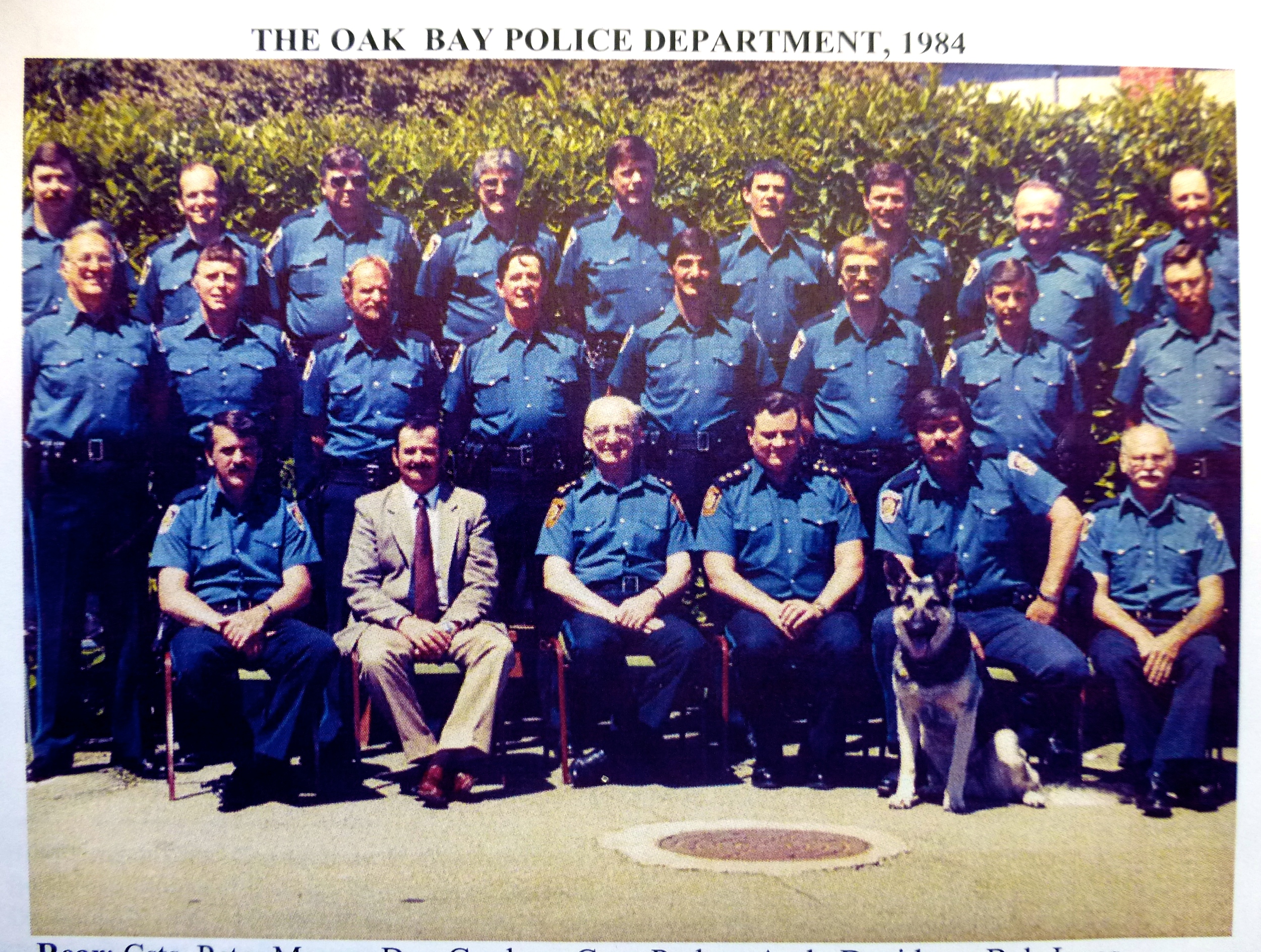Abducted: The First Twelve Hours
A full set of photos from this story and a short introduction for the post appears on the
McNeill Life Stories Facebook Page (Link Here) (Note: All the photos, except the two from the Oak Bay PD, were captured from Web sources.)
“Except for my dogs, I am alone in a world filled with people.”
For people of all ages, but particularly the young, few things can be more lonely than being on a street full of people and the only looks received vary between pity, disgust and outright anger. Most street people are viewed as being worth less than the clothes they wear. They could go missing, be raped or otherwise sexually assaulted, even murdered, yet this often raises barely a ripple of concern from the public, let alone police circles.
If they are of native descent or part of a visible minority, it is far worse. In 2010 during the Olympics, I watched as two members of the “Red Shirt Brigade” (Volunteer Security) in Vancouver were openly antagonistic and physically aggressive towards a native woman sleeping in the doorway of a store that was closed for the night. This story traces the social conflicts which remain close to the surface in this bountiful country of Canada. (Photo Web source)
(Post: February 2016 2794)
(July 2018 4702)
Introduction
“In the Oak Bay office, it was nearing 3:00 am, as the night shift Sergeant, Constable and a Civilian Dispatcher were cleaning up the coffee room when the phone lines lite up. In the quiet hours, this usually meant an accident or similar emergency had shaken several residents from their pre-dawn slumber. In this case, two blasts from a shotgun were followed by the blood-curdling screens of a woman. So began a twelve-hour saga where a young woman’s life hung in the balance.”
Having lived inside the police system for thirty years, this story, and others to follow, explore various Oak Bay Police Major Crime files from beginning to end. Many of the stories including this one, contain additional discussion about social issues related to the crime. This particular file is used as a sample of how some criminal acts (or suspected criminal acts) can be quickly filtered to ‘inactive’ when the victim lives outside the mainstream. While this is sometimes done for good reason, discounting these crimes can have serious, unintended consequences in the mainstream as is demonstrated in eight interconnected chapters beginning in the early 1980s and extending to the present day. If you wish to skip the social interest sections you can read Chapters 3-7 for the present criminal case.
Chapters 1: A discussion of how the police and justice system filter is applied and how societal norms (reference the section on deviance) impact the events such as those described in this Oak Bay Police abduction case.
Chapter 2: A general description of the Greater Victoria area, the various police departments and of the area in which the crime occurred.
Chapter 3 and 4: Provides background on the victim. This is done as a method of demonstrating how some victims, because of age, sex, socio-economic status, mental illness or some other factor, are left vulnerable when society in general and the criminal justice system in particular, fails to render assistance.
Chapters 5, 6 and 7: Tracks the investigation from beginning to end. This is done to demonstrate why a high level of cooperation between police agencies is an essential component of effective law enforcement. This is particularly so when a crime crosses jurisdictional boundaries, be it local, provincial or national. The chapters also demonstrate how a small Department the size of Oak Bay is able to provide a full range, effective police service. It also demonstrates how closely police agencies in Greater Victoria usually (but not always) cooperate with one another.
Chapter 8: Outlines other cases, in particular, the recent murder of Tim Bosma in Ancaster, Ontario, as a means of demonstrating how an application of the police filter can have unintended consequences when a serial sex offender or murderer is at work. I am presently writing a story about how a serial rapist and murderer (Scott Ian McKay) was finally charged with numerous counts of rape and one murder, after several police agencies in Greater Victoria came together in common purpose.
Addendum 1: A paedophile in our midst. This part, which began in the mid-1980s, flowed back to the surface in July 2013. It involved a Boy Scout Leader who led the Royal Oak Group of which our oldest son was a member until leaving the troop after a serious injury at a Scout Camp retreat in Sooke. There is no suggestion our son was molested, but the danger was lurking just one small step away from our family.
Moving Toward Equality of Access in the
Canadian Criminal Justice System
1. Police and use of the “Crime Filter”
In recent years, media and special interest groups have periodically focussed on the plight of “Missing Women” and their families in BC and other parts of Canada. It is now increasingly clear police files on missing women having a connection to drugs, prostitution, mental illness, and, particularly, if they are members of the native community, can result in the file being slipped to the bottom of the heap and, in many cases, stamped as “Inactive” after a short period of time. This also happens to men but with much less frequently than with women. The most that might happen, is having the person listed as ‘Missing’ on the National Crime Index system (CPIC). This does little good when the person is already dead and their body disposed of as in a majority of the Vancouver Missing Women files.
While the lifestyle of many missing women in the Lower Mainland left them vulnerable, that is no justification for paying less attention to their plight than a woman from mainstream society. Just imagine the investigative pressure if even one woman from West Point Grey (Vancouver) went missing under suspicious circumstances? On the other hand, in the Downtown East Side (an area much smaller than West  Point Grey), when forty, fifty or more women went missing over a few years; it caused barely an investigative ripple. Similar circumstances have occurred (and continue to occur) in other cities and towns across Canada.
Point Grey), when forty, fifty or more women went missing over a few years; it caused barely an investigative ripple. Similar circumstances have occurred (and continue to occur) in other cities and towns across Canada.
Photo Collage: These photos represent just one contact sheet of the woman reported missing from various parts of Vancouver, but mainly from the Downtown East Side, an area immediately adjacent to the Vancouver Police Station on Hastings at Main. I know the area well as I spent many hours at 312 Main Street during the course of my career.
The women, primarily sex trade workers, disappeared from the street and although their families continued to search, the woman were never again seen alive. Senior VPD members attributed there being missing as ‘just being persons who moving on’. The only people who really cared a few police officer as well as family and friends. Yet their pleas to investigate fell on deaf ears.
After Willie Pickton was finally convicted and the Oppal Inquiry had outlined the litany of investigative shortcomings across several police organizations, there was only a brief splash in the media and even less interest on the part of the government and police to implement a systemic change. As for the suggestion that various police organizations might at least apologize to the families of the murdered women, the Oppal Commission report had this to say:
“While the Vancouver Police Department has been proactive in apologizing for its shortcomings in the investigation, the RCMP has followed suit in a less fulsome manner.” (Huffington Post).
Of course, apologies were needed, but they meant nothing to those living at the margins of society. Only a significant change in policy (and application of that policy) for the handling of crimes against the disaffected would have real meaning.
Even after all that was said at the Oppal Commission hearings, it is a safe bet that today similar ‘missing person’ files gain little traction as police inaction simply reflects the low-value society places upon persons considered to have placed themselves at risk. As for the general population, emails, Facebook and Twitter posts often use the most disparaging terms to rail against those who apply for welfare, live in low-income housing or shelters, dress in an “unusual” manner, are observed begging on the street, are mentally ill, or known to be a drug user or prostitute. Take another look at the lead photo of that young woman on the street with her two dogs. Do you think you could make an accurate guess as to what lead her to the street? The next time you pass a person of similar appearance, check your first thought.
mentally ill, or known to be a drug user or prostitute. Take another look at the lead photo of that young woman on the street with her two dogs. Do you think you could make an accurate guess as to what lead her to the street? The next time you pass a person of similar appearance, check your first thought.
Sample FB post (right): This is the thrust of one type of initiative that has thrilled many. In one form or another, copies of such comments now regularly pop-up on Facebook, other social media and by email. These posts are often made by otherwise thoughtful people who obviously have a hate-on for a certain segment of society. Several US newspapers, including the New York Times, report that follow-up research reveals the drug testing programs have not produced any net savings while at the same time tending to further victimize legitimate applicants (2).
Why is this extreme approach taking hold in Canada?? For an answer we need only follow the efforts of the Federal Government over the past decade as they continue the crackdown on drugs, prostitution and other largely ‘victimless’ crimes and dozens of similar initiatives focussing on arresting, charging, and locking people up for longer periods. On the other hand, the continuing attack on harm reduction initiatives such as “Insight” as being wasteful of public funds and contrary to the governments “safe streets and communities” initiatives, continues at a fever pitch. As with the new marihuana laws, Canada is following outdated initiatives that became so popular among Republican legislators in the United States two or three decades in the past.
With the entire criminal justice system in Canada being pushed in one direction by successive federal governments, what would motivate any police department, let alone an individual police officer, to go against the grain by taking on the case of a missing, drug-addicted prostitute, street person, or someone that is mentally ill, whether they be a male, female, teen or adult? It just does not happen unless a body is found and even then it might only be investigated in a superficial way, a fact that played a role in the Pickton reign of terror (3).
New legislation proposed by the Federal Government in Bill C-36, will continue to marginalize sex-workers as it will push these workers and their clients into the back streets where the workers become even more vulnerable. The title of Bill C-36? The “Protection of Communities and Exploited Persons Act.” Give me a break! You could not think of a title that was more cynical. Exploiters, many being criminal psychopaths of the likes of Robert Pickton, Gary Ridgeway and child molesters such as B.C. born Christopher Paul Neil who wander our streets, will be clapping their hands as hundreds of potential victims become more easily accessed.
Photo: While Robert Pickton was convicted of six murders, he indicated to police he killed as many as 49. DNA samples for 39 women were found on his farm.
In the decade leading up to, then during the ten years Pickton was abducting, raping and murdering his way across the Lower Mainland, Gary Leon Ridgeway abducted, tortured, raped and murdered over seventy prostitutes in Washington State a mere hop, skip and jump to the south.
During Ridgeway’s twenty-year reign of terror that only ended in 2001, many Island and Lower Mainland police agencies in British Columbia, including representatives from every agency in Greater Victoria, assigned members to meet with representatives of the Green River Task Force at least once or twice each year. My partner and I attended those meetings and the grisly revelations of what happened to those women were the stuff of nightmares. It is difficult to comprehend how all British Columbia Detectives and GIS members – highly skilled men and women who were deeply involved in serious crime investigations – could have missed all the signs that a serial rapist and murder was operating in the Lower Mainland! (1)
In the mid-1990s, a member of the Vancouver P.D., Detective Inspector Kim Rossmo, developed a state of the art profiling system, but when he tried to convince his superiors that a spike in missing women from the Downtown Eastside suggested a serial killer was at work, senior officers rebuffed him at every point. (National Post)
While Rossmo was supported by others in the VPD, their voices were not strong enough to overcome those senior members who wanted no part of VPD members wasting time chasing down mainly native women prostitutes who went missing. After the revelations of what happened became public, a few of those senior officers were shuffled off too early retirement, but it is a safe bet that the deeply ingrained negative attitude directed toward street people barely changed.
After Rossmo was constructively dismissed from the VPD, the torture, rape and murder continued for many more years. As for his profiling system, it was not long before Rossmo ended up south of the border where he was welcomed with open arms. He is presently an Endowed Chair in Criminology and is “director of the Center for Geospatial Intelligence and Investigation at the Texas State University-San Marcos. More will be said in Chapter 8.
Children at Risk: The root of many social problems
We are now aware that across Canada, prostitutes were not the only ones being targetted. The serial rape and abuse of children in the privacy of their own home or in institutional settings were treated in much the same manner. It is also now known that a large number died under suspicious circumstances, but unless the death was a clear-cut case of homicide, it might well have been written off as ‘unknown’ cause, or some lesser explanation.
Children, of course, were in an even worse situation than prostitutes, as children had no control over outcomes. Of those who survived it is clear many ended up in lives that revolved around crime, drugs and prostitution – an endless, vicious circle from which it was nearly  impossible to escape.
impossible to escape.
Photo: Mount Cashel became one of the most notorious residential schools in Canada (and the world) after it was discovered that hundreds of young boys had been sexually abused by members of the Congregation of Christian Brothers. The school was only boarded up in 1989 after complaints of the abuse of children became an acceptable form of investigation within police circles.
We now know that many influential people in government and other agencies and institutions; particularly church-run schools and orphanages, were complicit in maintaining a vast cover-up. Even the police, who knew or ought to have known, turned a blind eye, particularly when the case involved a well-connected person or institution. Again, why did this happen in Canada?
The history of the sexual abuse of children and the law is well documented in a number of Law Reform Reports tabled in the 1980s. One report states: “Before 1982, sexual offences involving children were virtually impossible to prosecute to conviction.” (Law Reform Report, Volume 47, p 440ff).
It was not until after 1988 when the laws were changed, that a trickle of abuse reports turned into a deluge as thousands of adults who were victimized as children, finally gained a voice. Thousands of others never came forward as they had long since lost the battle to drugs, prostitution or crime. Many (mostly women) went missing and were never again heard from. It was often at the margins of society, where criminal psychopaths in the form of serial rapists and murders, gained easy access to victims (4).
During those early years, Det/Sgt Garth Fowler and I investigated a number of “historical sexual assaults” brought to the attention of our Department. The present case began with the all to familiar abuse home that led a teenage girl to flee to the streets of Edmonton.
As with hundreds of other young people across Canada, she became largely invisible as far as police and government agencies were concerned. The business community noticed, but chiefly because street people, particularly those who used drugs or alcohol, were unsightly, acted in a weird manner or hassled customers for change. ‘Those people’ were just plain bad for business.
This case study outlines how, when a young person ends up back in the mainstream, they again become ‘visible’ and if they become the victim of a crime, even the threat of a crime like ‘stalking’ or ‘harassment’, an investigation will be quickly mounted.
The following story also demonstrates how contrary to media reports and a few whiners within police circles, the City Police in Victoria and four surrounding Municipal Departments (Saanich, Central Saanich, Esquimalt and Oak Bay) along with the two RCMP detachments (Colwood and Sidney), cooperate amazingly well when an investigation crosses jurisdictional boundaries (at least they did over the 30 years I worked the streets).
Footnotes Chapter 1
(1) One such serial rapist/murderer was identified in Victoria during those years, however, the astute work of a Colwood RCMP GIS member , Bruce Brown, who laid the groundwork for the man’s eventual arrest and conviction. The details of the case will be part of a future post in which a young woman from the mainstream became one of his victims and another young woman, the daughter of a former police member, nearly met the same fate. That case began to come to its conclusion after a vicious rape on the Beach at McNeill (Shoal) Bay in south Oak Bay. The killer was clearly a criminal psychopath who wantonly preyed on prostitutes and finally ended up killing a young woman, Margurite Telesford, near Mount Doug Park
, Bruce Brown, who laid the groundwork for the man’s eventual arrest and conviction. The details of the case will be part of a future post in which a young woman from the mainstream became one of his victims and another young woman, the daughter of a former police member, nearly met the same fate. That case began to come to its conclusion after a vicious rape on the Beach at McNeill (Shoal) Bay in south Oak Bay. The killer was clearly a criminal psychopath who wantonly preyed on prostitutes and finally ended up killing a young woman, Margurite Telesford, near Mount Doug Park
”In a four-month period last year when Florida required welfare applicants to undergo drug testing, the program yielded no savings, caught few drug users, and did not affect the number of people who applied, The New York Times reports the program was halted after the American Civil Liberties Union (ACLU) of Florida sued the state to stop.
The group obtained state data that showed from July through October 2011, 2.6 percent of welfare applicants failed the drug test, and an additional 40 people did not take the test. Applicants paid the cost of the test, an average of $30. If they passed, the state reimbursed them.
The cost to Florida was $118,140 for drug
tests—more than would have been paid out in benefits to those who failed the test, according to Derek Newton, Communications Director for
the ACLU of Florida. He said the testing cost the government an additional $45,780.
Georgia instituted a similar law this week. It is expected to face legal challenges. A number of other states are considering similar measures,
according to the newspaper.
(3) Photo: Interior of the Vancouver Downtown, Eastside harm reduction program facility – Insight is shown in the photo. The program has worked amazingly well for a number of years and is supported by Vancouver and the Province of B.C. The Federal Government, however, have been trying for years to shut it down as being contrary to their ‘safe streets and communities’ initiatives. The Federal Government has made it abundantly clear they would prefer programs such as that initiated in Florida, Georgia and other states.
(4) Impact of the Charter of Rights on Law Reform: Had it not been for the Canadian Charter (1982), Canada would not have made near the progress it has in helping to create a more equitable society. While we still have much distance to travel, there is progress despite the continued challenges being mounted by the Federal Government.
2. The Monday Morning Doldrums (the early 1980s)
Throughout Greater Victoria, better know within tourism circles as the land of ‘newlyweds and nearly dead’s’, it is habitually quiet on Sunday evening and over the early morning hours of Monday. On most nights after the bars close and the usual rowdies disperse, life slows to a crawl.
As the old VCP (now ‘branded’ as VicPD) joke goes – at 3:00 am, you could fire a rifle down Douglas Street and never fear for hitting a single soul. That remains the case today as across Greater Victoria and the rest of Canada, crime has continued has plummed, a trend that began in the early 1990s. Perhaps all the police personnel are more efficient today but I strongly suspect the real reason is general taming of the worst instincts in society.
So it is in thousands of cities, towns and municipalities across Canada and while the police (and certainly government) try to define things differently, that is either bravado on the part of the police agencies or, in the case of government, out and out fear-mongering as ‘tough on crime’ legislation always sells so well.
In fact, Greater Victoria and Vancouver are among the safest cities in Canada (below the National Average for crime) and, in the world, Canada stands among the safest (1). Of course, no one has ever mistakenly suggested that crime is a thing of the past or that Oak Bay stands in contrast to all others in the Greater Victoria area.
Behind the Tweed Curtain
With its quaint, English village charm, Oak Bay is often referred to as ‘sleepy hollow’. This is likely prompted by jealousy mixed with a good measure of envy, as there are few residential communities in the world that boast such tranquillity within a fifteen-minute bike trip to the core of the most popular tourist destination in Canada.
At the time of this story in the early 1980s, Oak Bay hosted a population of 16,000 and since its incorporation in 1906, subsequent Municipal Councils carefully nurtured the peaceful image of a village filled with Garry Oaks and thousands of species of blooming trees, shrubs and seasonal flowers that proudly display their beauty from January through December.
 With sandy beaches and rugged rock outcroppings along the eastern and southern shores, the dark blue waters of Georgia and Juan de Fuca Straits stretch peacefully to the snow-capped mountains of Olympic Range in Washington State.
With sandy beaches and rugged rock outcroppings along the eastern and southern shores, the dark blue waters of Georgia and Juan de Fuca Straits stretch peacefully to the snow-capped mountains of Olympic Range in Washington State.
File Photo: The stately and volcanically active Mount Baker in Northwestern Washington which often seems to touch the very shores of central Oak Bay at Cattle Point was for many years featured on the Oak Bay Police shoulder patch.
Southwest Oak Bay is bordered by the City of Victoria (1980, pop. 65,000), and on northwest and north, by the Municipality of Saanich (1980, pop. 95,000). As the largest residential and business areas, the Victoria and Saanich anchor a matrix of thirteen municipalities. This matrix has allowed Greater Victoria to evolve an eclectic mix of community personalities that is unique among the small Canadian Cities and for those who police these areas, a ‘no call too small’ philosophy allows each to escape many of the downsides that often infect the administrative systems of the large metropolitan, provincial and national police forces across Canada.
In this regard, the Oak Bay Police Department, about which many stories have been written over the past several years, is typical of that found in hundreds of small communities that retain a stable force. Over the past 65 years, it has seldom strayed from a compliment of 18-25 regular members, supported by a contingent of 4-6 civilians and over the past 100 years without a scandal or serious misstep.
Rear: Constables Peter Mason, Don Gardner, Gary Parker, Andy Davidson, Bob Jones, Steve Voller, Russ Heslop, Ron Morgan, Sgt. Harold McNeill
Second Row: Sgt. Owen Duckmanton, Cst. Keith Pittam, Darryl Jantzen, Archie McKay, Ron Gaudet, Ernie Stockman, S/Sgt. Barrie Parker, Al Campbell
Front Row: Sgt. Garth Fowler, Det/Sgt. Bob Faith, Chief Constable Bill Moyes, D/Chief Andy Anderson, Cst. Ron Coull (PSD Duke), Sgt. Dick Lopeter.
The reward of being a member in a small department is the opportunity not only to become closely connected to the residents and business persons of the community but also for officers to have the opportunity to become deeply involved in investigating almost every type of criminal activity that can be conceived. The challenge for small departments (say, under 50 members), is maintaining a readiness to investigate a major, sometimes complicated, crime. Such was the circumstance in the present case, which occurred during the early morning hours when only two regular members were on patrol.
For police in most communities, including those in larger forces, work-life on the street rotates between long periods of routine interrupted by short, intense periods of high stress. Indeed, that is the case in most emergency service organizations such as fire, health care, search and rescue and any other you may wish to add. On this particular night shift, the two regular members supported by a civilian dispatcher had just finished lunch and were getting ready to head back to their regular duties.
Footnotes Chapter 2
(I) Indicators of Well-Being in Canada.
The Abduction case begins
3. The Early Years
Three blocks from the Monterey Avenue Police Station, a young woman was sleeping soundly after spending a late evening with a few friends from her downtown Douglas Street office. On the way home, she had the eerie feeling someone was watching her but quickly wrote it off as being leftover fears from her earlier life. Upon entering her apartment, she set the deadbolt she had installed when  moving in a few months earlier.
moving in a few months earlier.
She knew the deadbolt would not afford much protection, as her experience of living in hotels and apartments that catered to the down and out of Edmonton, taught her that one swift kick and most locks and doors would be history. The best she could hope was that the extra lock and the heavy wooden door would give her time to dial 911.
Photo (Web Source). The colourful, English style shopping area along a six-block area of Oak Bay Avenue from Foul Bay Road to Monterey Avenue, is the largest and most popular business district in Oak Bay.
She carefully selected this third-floor apartment in North Central Oak Bay, as it was only four blocks from the Police Station and that alone provided an added sense of security. She was making good progress in reestablishing her life, but the recurring nightmares of the abuse she suffered first at home and later in Edmonton as a teen on the streets remained close at hand.
After four months in her new job, a nice apartment between the colourful and community-based business districts of Will-o-Way in the north and Oak Bay Avenue in the south, with new friends she could call anytime, and spending money in her pocket, on most days she would awake full of energy and eager to explore her new life. This new life was as different from her old life as night is from the day.
Now twenty, it was just four years since she ran away from her home on a small farm northwest of Edmonton. This story will not go into detail, but the reasons for running have been documented in thousands of similar cases over the past two decades.
Landing on the streets of Edmonton in late June, she was scared, lonely, had no friends, no job and no place to stay, so the $20.00 in her jeans pocket seemed a pitiful amount to begin a few life. It was a path forced upon many young people in this bountiful land we call Canada. As the young woman had always lived on a farm and never travelled much beyond the small town near her home, she was entirely naïve to the ways a big city could eat the indigent and innocent young.
her home, she was entirely naïve to the ways a big city could eat the indigent and innocent young.
Comment: “You see a piece of furniture on the street and you think ‘that could be something beautiful’, but you see a street kid and you think, ‘don’t make eye contact’. The next time you see a street kid, check out what you are thinking.
Over the next two years she survived as best she could, but it was a miserable, stinking life during which time she met a number of young people whose lives closely paralleled her own. While a few were able to maintain some semblance of normalcy, others had long since lost the battle to drugs and prostitution as they fought to survive.
As was often the case, older men and more than a few women, including a good many well-to-do business people, assumed the younger girls and boys were available for the price of a meal, a fix or a little personal attention. As for the police and other authorities (and this included a large percentage in general society), many held the view these young people were the authors of their own mistakes. Perhaps that is true for some but for many, dysfunctional families, poverty, mental illness and a raft of social ills, tended to define their lives from an early age.
The only thing that saved her from the worst was a strong independent streak and a desire for personal survival. She had not succumbed to drug use as she knew from watching others, that would only provide temporary respite. She was also understood the only way to earn money to support a drug habit was the path taken by many others who inhabited the streets. It was a bottomless pit from which drugs provided only momentary relief.
Although summers were hot, they were bearable, but the winters presented a harsh reality that even the strongest of street people found difficult. Still, the young woman was not ready to give up to forces in her life that seemed bent on corrupting her.
4. Redemption: A caring, older man?
As she was about to turn eighteen, she chanced to meet an older man who took her in and provided respite from the harsh winter that enveloped the streets. The usual trade of care for service seemed not to be part of his agenda and even if it had, she felt she might be willing to strike a bargain. He had a decent job, a nice apartment and for the first few months was a caring and kind father figure.
She enrolled in secretarial school and with her intelligence and work ethic, was able to complete the course in record time. Soon after graduation, she secured a job in the secretarial pool of a large firm. It was the beginning of a new life that seemed to hold real promise.
Then, late one night, the interests of the father figure who helped her and encouraged her, took an ugly turn. In a split second, she was transported back to her early teens. It was then she realized something that had been slowly dawning over the past few weeks – the man’s protective nature masked fits of dangerous jealousy he was no longer able to control. He had found her, gave her a warm place to stay, cleaned her up and helped to create opportunities – now it was time to collect.
Not many nights later, after spending time having drinks with a few friends from work, the man’s anger exploded into violence that left her with a black eye, bruises on her arms and with a real fear that at some point he might kill her if she backed away from the bargain he defined. The only option – she fled back to the streets from which she had departed just a year earlier.
Because she now had a solid job and other friends, she was soon able to find a place to live, but it was not long before the man started harassing her at work and then stalked her whenever she was on the street or in a public place. One night after a violent confrontation near a friend’s apartment, she phoned the police. As the young woman was now a part of regular society, immediate assistance was rendered.
She found it quite amazing, for when she was on the street she saw a number of young people badly beaten, sexually abused and worse, yet no one, not even the police, really cared. Becoming a street person meant forfeiting any right to the services provided to those in the mainstream. While there were a few who cared and tried to help, just as many were abusers. It seemed those who abused the less fortunate often did so as means of mitigating their own shortcomings. Now though, it was completely different – the man was actually arrested, charged and taken to court.
Although placed on a bond to keep the peace, she knew it would only be a matter of time before he ripped up that small piece of paper and came looking. After discussions with the police officer and social worker who were helped her, she decided it was best to leave the city. Her company offered a similar job in their Victoria, B.C. office and in less than a week she was on her way.
She had hoped beyond hope, she could leave the past behind as she landed first in Vancouver then, a few days later, took the ferry to Victoria. Careful to leave as few clues as possible, she still wanted to maintain contact with friends in Edmonton and a few in her Northern, Alberta hometown, but she knew this would come at a cost. While each friend was warned never to give out information as to her whereabouts, she knew it was never really possible to keep something like this totally secret.
That evening, after arriving at her apartment just after midnight and setting the locks, she checked to make sure nothing in her room had been disturbed. Feeling satisfied, she had a quick shower, slipped into her pyjamas and jumped in bed. Just before falling asleep, she again had an eerie feeling someone was watching.
5. Shots Fired
No call will catch the attention of a cop quicker than “shots fired” or “officer down”. Virtually every cop within two hours flying time will drop whatever he or she is doing (if their current call is not close to the same priority) in order to render assistance. This is written in
 bold print in the Cop Bible and is true at all times and across all boundaries.
bold print in the Cop Bible and is true at all times and across all boundaries.
While there is a mix of city, municipal and RCMP in Greater Victoria, the thin blue and red line holds fast despite differences between politicians and whatever can be stirred up by the media and a few activist senior police administrators. But, that is the subject of another conversation as the present case revolves around how individual officers always help each other whenever the need arises. In the system of cover, Victoria members often referred to Oak Bay patrol units as their Eastside Prowlers (police units). The same applied to Saanich and those two departments, in turn, would provide immediate cover for Oak Bay whenever the needed.
In the Oak Bay office, it was nearing 3:00 am, as the night shift Sergeant, a Constable and a Civilian Dispatcher were cleaning up the coffee room when the five phone lines lite up. In the quiet hours, this usually meant an accident or similar emergency had shaken several residents from their pre-dawn slumber.
Each member grabbed a line and was presented with a frantic call for help stating shots had been fired in an apartment just off Cadboro Bay Road. A woman was screaming for help. After taking one call each, the Sergeant and Constable left it to dispatch to sort out the remainder while they headed to the scene.
It was one of those moments when things went from dead quiet to potentially life-threatening within seconds and the shot of adrenalin wiped away any trace of early morning doziness. On the way to the scene, knowing dispatch would be buried for several minutes; the Sergeant provided an update with the outside departments. While the advanced technology of an integrated emergency channel provided instant contact, it still meant driving while considering the nature of the call and the best approach to take. While cover would be on the way, it would take a few minutes to arrive and immediate assistance might be critical if someone was seriously injured.
In the office and under considerable pressure, the dispatcher provided a brief update: One caller reported having glanced out her door and saw a man and woman disappear through the west exit staircase; another saw a man carrying a gun and the woman being held by the arm was screaming for help; still, another heard the screeching of tires in the back parking lot, but no one saw a car; one caller was certain a shotgun was used and heard two blasts on the third floor; no one to this point was able to give much of a description other than it being a man and a woman.
The Oak Bay Sergeant left it to a Victoria or Saanich Patrol Sergeant or dispatcher to sort out the placement of attending cover units. Meanwhile, Esquimalt and Central Saanich would roll units towards Victoria and Saanich in case further back up was needed in those areas. Greater Victoria would remain well covered.
These interdepartmental assistance plans were designed to cover off major streets and intersections in the event of a bank robbery, a regular occurrence in those days. As the number of robberies slowed, the system of cover (mutual aid) naturally flowed over to other high priority calls in which a suspect was fleeing the scene. That coverage was good, but the immediate challenge was rapidly evolving events at the scene.
For the Oak Bay officers, approaching in the safest and quickest manner possible was essential. Both men were competent, experienced officers, but even the most experienced officer could make a fatal mistake if they tried rushing into an unknown situation involving gunfire. As there were far too many unknowns to take everything into account, it was still a by guess and by God approach.
Was there more than one gunman and what was the purpose of this intrusion into a peaceful community in the early morning hours? Was it a family dispute gone awry? Of the many dangerous situations officers attended in every city and town, domestic disputes were often among the most volatile. Having two officers shot and possibly killed while carelessly approaching or entering crime scene was not going to help anyone.
After stopping a half block back at Cadboro Bay Road and well out of sight of the apartment, the officers grabbed their rack-mounted Remington shotguns, climbed from their cars and scanned the street. Nothing. While each man carried a Smith and Wesson .38 calibre handgun, on this type of call where gunfire might erupt at any moment, a shotgun was an intimidating and useful weapon. It could also be fired in a manner that would have the greatest effect while creating the least danger to innocent bystanders.
Walking cautiously, the men listened for anything that might alert them to immediate danger, but all they could hear were the sound of sirens echoing across the city. The Sergeant took the lead while his partner provided cover from a discreet distance. As they approached, the officers could see lights on throughout the building, but, wisely, no one had yet to appear on the street.
After completing an external check, a resident buzzed the officers in and they made their way to the third floor via a staircase. No further sounds could be heard other than radio chatter from attending units. At the third floor landing, the officers scanned the hallway and halfway down, saw two shotgun casings lying on the carpet while the smell of gunpowder residue hung heavy in the air.
As they cautiously approached the door, it soon became obvious both locks had been blown to smithereens as shattered pieces of wood and metal were sprayed onto the apartment. The presence of the two fresh casings suggested the culprit was using a pump-action shotgun, perhaps similar to the Remington’s the officers cared, and if the gun was not in the apartment, the suspect likely carried a loaded weapon from the scene.
A quick check inside revealed the one-bedroom apartment was empty and, thankfully, there was no sign of a body or blood splatter. That was good news as whoever was taken from the building was probably not yet injured. As there was no gun evident, the Sergeant advised approaching units the suspect had fled the scene in a car, was armed and from evidence at the scene, had likely abducted a woman.
Two units from Victoria were assigned to provide outside cover at the apartment while other units were advised to be on the lookout for any suspicious vehicle. In cases like this, a suspect often found it difficult to stay within the speed limit so when the streets were quiet, like tonight, a speeding vehicle could be heard halfway across the city. As things settled down, the Sergeant directed his partner to make a cursory search of the apartment for any information that might provide a clue to the identity of the woman and her abductor.
Meanwhile, he used a phone in a nearby apartment to direct dispatch, as time permitted, to call out both members of the Detective Office and, as well, all members scheduled for the upcoming dayshift. Following that, the Chief Constable and Deputy were to be notified. Further call-outs would be determined later. While these notifications may sound simple, with only one person in the office and the phones and radio demanding constant attention, it took a cool head to stay on top while maintaining an accurate time log.
The time log was important as after an event like this there would always be a lot of second-guessing as to how quickly (or slowly) the response was made, what the officers did, how they did it and whether they made the right decision in the heat of the moment. The press was particularly adept a picking apart these events in the most critical way possible
6. The Investigation Begins
With the scene secured, by 3:45 am, Detective Sergeant Fowler and Detective McNeill arrived at the office at 4:15 and after receiving basic details from dispatch, collected their gear and headed to the apartment.
They soon learned from court documents the likely names of the victim and a possible suspect, an Edmonton man who was, a few months earlier, placed on a peace bond. That was a stroke of luck as in many cases it took significantly longer to determine possible identities.
It appeared likely the man travelled to Victoria, stalked the woman and an hour earlier, had abducted her at gunpoint. As there was no description of a vehicle, McNeill returned the office to initiate contact with the Edmonton PD while dispatch continued compiling information from CPIC (Canadian Police Information Centre). As soon as possible an APB would be circulated among police and media outlets across British Columbia and Western Canada. The availability of CPIC to get information out quickly was an amazing technological step forward for police agencies (1).
In this case, as the use of violence was clear, officers understood that quickly finding and rescuing the victim and arresting the suspect, would provide the best chance of survival of both. The fact the man had not immediately killed the woman while in the apartment, suggested he was trying for something other than revenge. Perhaps reconciliation was on his mind, although the method he chose certainly seemed doomed to failure. It was also clear to everyone this case could quickly turn into a murder or murder-suicide if the suspect lost hope.
After Sergeant Fowler completed the Identification work, one officer was assigned to continue canvassing area residents and as members from dayshift trickled in, they were assigned other tasks. Both officers from the nightshift continued working into mid-morning so, combined with the Chief, Deputy and civilian staff, there were 10-12 members available to assist while still covering off any emergencies that may arise.
In situations such as this, the Detective Sergeant assumed overall control of the investigative while the Chief and Deputy were pressed into service as needed. Also, in the event of a further emergency, Victoria and Saanich remained on standby.
By 7:30 am Edmonton Police had passed back all information from their files including photos of victim and suspect. Importantly officers now had a possible vehicle description. While there was no way to confirm the suspect brought his own vehicle (he may have flown and rented a car), it was the best bet at this moment and if the use of his own car was not soon confirmed, the possibility of a rental would be explored later in the morning.
With the APB circulated, police agencies with ferry departure points or an airport would pass along the information to security personal. While the morning paper was missed, other media outlets continued to broadcast information as it became available.
Additionally, the RCMP in Sidney stationed a car at the Schwartz Bay Ferry Terminal prior to the 7:00 am sailing in case the suspect attempted to leave immediately. As for the airport, this seemed unlikely unless the suspect had already killed the woman. If she were alive and resisting, it would be impossible to exit by air.
The next possibility – the suspect already had a place to hunker down until he thought it safe to travel. A hotel or motel was a distinct possibility as driving around aimlessly seemed unlikely as the suspect had to think the police would soon have a description of him and possibly a vehicle even if it was rented.
 The challenge with beginning a door-to-door motel and hotel search is that being one of the top tourist destinations in Canada, there are literally hundreds of hotels and motels. Never the less, because it was a good bet the man had set something up, the Yellow Pages were divided among four or five members and they began calling every location in an ever-expanding circle from Oak Bay. Two spare phone lines in the Fire Department were pressed into service and the Oak Bay Fire Chief even assigned one or two members to assist.
The challenge with beginning a door-to-door motel and hotel search is that being one of the top tourist destinations in Canada, there are literally hundreds of hotels and motels. Never the less, because it was a good bet the man had set something up, the Yellow Pages were divided among four or five members and they began calling every location in an ever-expanding circle from Oak Bay. Two spare phone lines in the Fire Department were pressed into service and the Oak Bay Fire Chief even assigned one or two members to assist.
Over the course of the next few hours, the notification process continued until noon when a clerk from a motel just off Douglas Street near the Mayfair Shopping centre, phoned in. On checking the registration cards he found one for a man with the same name as our suspect. The man was currently registered in a second floor, rear corner room that he had rented out two days earlier. As far as the clerk knew, the man was still in the room. The licence provided was from Alberta, but did not match that on the registration card. The day clerk said he would contact the night shift clerk who had also registered the man and ask him to return to the motel to be interviewed.
Footnotes to Chapter 6
(1) In 1974, Constables McNeill and Campbell used CPIC as the final key in tracking down an ex-military man from Austria who murdered a Canadian Defence Research Scientist in Walburn Park in South Oak Bay (link). This murder case will be the subject of a future feature-length story.
7. The Net Closes
Fowler and McNeill, along with two dayshift members, attended the Mayfair Motel along with a VCP Sergeant and two patrol members. Oak Bay, Victoria and Saanich units began a search of the immediate area and ten minutes later the suspect vehicle was found parked in a lot less than a block away. A loaded pump-action shotgun was found under a blanket on the floor of the back seat.
With the aid of Victoria and Saanich, containment was set up around the motel and a command post set up in the motel common area. When the night shift clerk arrived, he told officers he saw a man and woman heading to the second floor about 3:30 am but did not get a good look at their faces. He did not take much notice, as it was not unusual for men to bring a woman back to the motel at odd hours. However, he thought the woman to be oddly dressed in what looked like pyjamas. He was certain it was the man who registered in the motel two days earlier.
As it was early in the season and a Monday morning, there were only a dozen and a half rooms rented and of those, six occupants had checked out that morning. Of the remaining rooms, another six or so had left on other business. It took only a few minutes to clear the remaining rooms.
A decision was made to have the clerk phone the suspect and have him to come to the lobby on some pretext. Before the call was made, Fowler and McNeill took up a post in the room next door and two more officers in the room across the hall. Through the paper-thin walls of the adjoining room, Fowler and McNeill could hear muffled voices of male and female and while they could not understand exactly what was being said, it was clearly not a heated argument.
The ruse of having the man come to the front desk did not work as he immediately became suspicious. It seemed he was already aware the police were in the vicinity so the next step was having a police negotiator engage the suspect. Although hostage negotiators were relatively new on the scene, their value was being proved time and time again, as they worked to resolve tense situations with a barricaded suspect or one in which hostages were being held. After a brief discussion, a Victoria officer was selected as he was on duty and ready to go.
Over the course of the forty-five minutes, after the negotiator had developed a solid rapport with the suspect, he was able to convince the man his only realistic alternative was to release the woman and give up. Less the two hours after the location was identified, the situation came to an abrupt end when the suspect walked from the room and was arrested.
On entering, Fowler and McNeill found the woman tied to the bed and while she had been through a harrowing experience, was otherwise unharmed. Fowler and another Oak Bay officer took the suspect, while McNeill and a female member took the woman, to Oak Bay office. The suspect provided a full statement after which Fowler fingerprinted and processed him into the Victoria police cells. Meanwhile, McNeill obtained a full statement from the woman. It was during the interview that the details of her past life came to light.
By 5:30 pm, with the suspect was lodged cells, and charged with a half-dozen offences, the woman was taken to a friend’s apartment where she would stay until her own apartment door was repaired. The next several hours would be taken up completing the reams of paperwork needed to document the case.
For members of Oak Bay Police and those from outside departments who assisted, it was an intense twelve hours where the outcome could have easily had a heartbreaking end. It was also a compelling case that emphasized the strengths and weaknesses of the criminal justice system.
The strength, of course, was the professionalism and discipline displayed by the many officers and civilians who worked the case. The high degree of cooperation between the police agencies, as well as the cooperation given by the press, radio and television and the willingness of the motel and hotel operators to take time to check their records, all shared in the successful outcome.
The weakness, of course, is the failure of the justice system (in general) to deal with the underlying social issues, in this particular case the abuse of children and women and then the inability to create safe conditions once the action was taken against clearly dangerous individuals. Perhaps, in a free and democratic society, the latter is a circumstance we must accept as one of the imponderables of maintaining a balance between personal freedom and a police state.
In the present case, it would be left to the courts to decide what was to become of the man responsible for the abducting and placing this young woman’s life such danger over several months in Edmonton and then, later, in Oak Bay and Victoria. As for the young woman, we can only think she will do well with her life, a life that began with so many challenges to overcome.
8. Follow-up Discussion
Over the years of writing police stories, the subject of how the ‘attitude’ of a police officer or, indeed, of an entire police organization plays a critical role in determining the outcome of cases, has often flowed to the surface. Whenever prejudice, bias, lack of empathy, arrogance, bravado, showmanship, indifference or other negative factors creep in, important evidence of a crime can be missed or dismissed particularly if the victim lives near or beyond the margins of civil society.
The Oak Bay/Victoria case, on the other hand, is a classic example of how quickly and efficiently investigative resources can be drawn together when the life of a person from the mainstream is placed in danger. Granted, it was a relatively straightforward case in which the victim and suspect were quickly identified but ponder for a moment if the same victim and suspect were involved in a slightly  different set of circumstances.
different set of circumstances.
Working women on the streets of Canada are left largely at the mercy of a John in an unregulated system. In this business, it is not the ‘buyer beware’ but the “seller”. Who is in that car? Some low life who loves to beat up prostitutes or is it a respectable businessperson with a little spare cash and feeling ‘needy’. It can be difficult to discern the line between the two.
Pushing these women into a back alley will not stop them from plying their trade, however new legislation presently before Parliament will certainly make them less safe than if they advertised in a newspaper, on the web or were able to work at a specific hotel or other location which would provide a better chance of screening our bad clients. It would also be easier to have someone watch out them without becoming an accessory (5).
Had the victim in this Oak Bay case fallen into a life of drugs and prostitution while on the streets of Edmonton, was then abused, perhaps abducted, even murdered by that same suspect, what are the chances the case might have gone by unnoticed even if friends (in her case, other street people) and family (in this case, the family cared diddly squat) came forward to report her missing as has happened with dozens of Missing Woman reports in Vancouver and likely hundreds more across Canada?
As a recent comparison, take the case Laura Babcock, a young Ontario University Graduate who went missing. Despite entreaties from family and friends, the police brushed aside their concerns. While a “what if” question is a dangerous connector, the Babcock case appears to be the leading edge of a series of events that ended with the brutal murder of two men from the mainstream. Was it the first murder, or was it just another in a series that finally ended with the killing of a young man.
The Tim Bosma Murder (February 1, 2016 – The Trial Begins today)
February 4, 2016. A recent article in the Christian Courier recently paid tribute to the victim in this case.
Tim Bosma was the young, hard-working, husband and father from Ancaster, Ontario, who went missing while showing a truck he  had for sale. The cold-blooded killer eventually charged in Bosma’s death, was one Dellen Millard, a rich playboy who had unrestricted access to everything life had to offer. But Millard had a dark secret – a penchant for cold-blooded murder.
had for sale. The cold-blooded killer eventually charged in Bosma’s death, was one Dellen Millard, a rich playboy who had unrestricted access to everything life had to offer. But Millard had a dark secret – a penchant for cold-blooded murder.
Photo: Tim and Sharlene Bosma with their baby daughter.
After being chased down and charged with Bosma’s murder, Millard finally came under suspicion in two earlier cases – that of a former girlfriend, Laura Babcock who went missing and, astonishingly, the death of his own father, William Millard. It is, however, the murder of Ms. Babcock that draws together the points made throughout this story.
Near the time Laura Babcock, 23, went missing in early July 2012, her former boyfriend, Shawn Lerner, was aware she had taken up with Millard and as the circumstances of her going missing seemed suspicious, he reported his concerns to the police. However, the police showed little interest other than completing a missing person report.
Shawn, along with the girl’s family, continued the search and in mid-July, 2012 found a copy of her cell phone bill which showed that on July 3, 2012, Babcock had phoned Millard eight times. Learner made contact with Millard and on meeting him at a coffee shop pressed the man about the phone calls and about the girl being missing. He found Millard to be evasive and after Millard denied there was anything untoward, the man nervously got up and left. Lerner went back to the police with this information but was still unable to drum up any interest. “What if?” still haunts the young man.
Photo: University Graduation picture of Laura Babcock, an honours student, who, while struggling with bouts of depression, slowly drifted to the seamy side of life.
It is certain the police were now aware the girl suffered from some form of mental illness, had developed an addiction and was prostituting herself. Even though she was a University graduate and had a solid family, the negative aspects of her life cast a dark shadow which seems to have negatively influenced the police handling of her case.
The ‘missing person’ report, other than entering her on CPIC as ‘missing’ was likely stamped as ‘inactive’. Another strike against taking up the case – Millard, deviant as he was, was also rich, well connected, and held a senior position in the well-known and respected family business, Millardair. By comparison, Babcock was nothing more than a mentally ill, drug-addicted, prostitute (1).
A few months later, in November 2012, William Millard, Dellen’s father, was killed by a single gunshot. The death was investigated and ruled to be suicide. From this point on everything went quiet for six months until Tim Bosma went missing on May 6, 2013. A massive, province-wide search began and one week later, on May 14, Tim Bosma’s burned remains were found on the Millard farm. The following day Millard was charged with murder. Charges against others would follow in quick succession.
After the Millard charges, obvious questions surfaced about the two previous files linked to the young man – one labelled “Inactive” and the other “Concluded”, the Babcock and Millard Senior files respectively. Both cases were reopened.
 On May 6, 2014, the anniversary of Mr Bosma going missing, Millard and an associate were charged with the murder, Laura Babcock. In a further twist, the date of the murder was listed as July 3, 2012, the very date Babcock made eight phone calls to Millard. On that same day (May 6) Millard was charged with murdering his father. It was a stunning, but not unexpected, turn of events as those files appear to have been rather casually handled in the first instance. (Ref full-time frame in Footnote #4)
On May 6, 2014, the anniversary of Mr Bosma going missing, Millard and an associate were charged with the murder, Laura Babcock. In a further twist, the date of the murder was listed as July 3, 2012, the very date Babcock made eight phone calls to Millard. On that same day (May 6) Millard was charged with murdering his father. It was a stunning, but not unexpected, turn of events as those files appear to have been rather casually handled in the first instance. (Ref full-time frame in Footnote #4)
Photo: Dillan Millard (C), he and his father in aircraft (R) and his father when younger (L). Below the Millardair Hanger and one of their aircraft.
While the details will eventually emerge at trial, it is hard to imagine that ‘new evidence’ suddenly become available other than perhaps an associate of Millard having ‘cut a deal’ in return for giving evidence against Millard. It seems likely evidence that already existed in both the Babcock and Millard Senior murders, was now being sifted through a different filter.
It would be extremely interesting to read exactly what investigators had to say in their initial investigative reports for the month or two following Babcock being reported missing, and about how investigators came to the conclusion Millard Senior’s death was suicide. While there is no suggestion police tried to cover up anything, it does seem possible that a missing, mentally ill, drug-using prostitute, was of such low priority that nothing her family or friends had to say would carry much weight.
As for Millard Senior, the charge suggests police may have been too hasty in ruling a murder as a suicide, rather than treating it as murder then having the evidence lead them to a finding of suicide (2). In my own career, there was a similar case about which I now have second thoughts (3).
Overall, the cases mentioned in this story bring up unsettling questions for which police agencies and investigators need to be held to account. That was the stated intention of the Oppal Inquiry, but, as we now know, the inquiry failed at every turn. Police apologized or at least went through the motions, but beyond that, it was business as usual.
A Final Word on Missing Women
For the police in Ontario, the attention given by media to the plight of ‘missing woman’ across Canada over the past twenty years cannot have gone by unnoticed. For the officer(s) originally assigned to the Babcock case, might it not have been worthwhile to at least jerk Dellen Millard’s chain, given he was the last known person to have been in contact with her? While she clearly had problems, it was equally clear she had family and friends who loved her and who were deeply concerned about what might have happened.
Also, what better place to begin looking for the first signs of a serial killer or rapist than in a community of people whose lifestyle places them at risk? There have certainly been enough cases in Canada in recent years to suggest serial rapists and killers often begin with the most vulnerable in our society. Over the coming months, I will write other stories that tracked through several Oak Bay Police files where a criminal psychopaths began their nefarious careers among the down and out, then graduated to the mainstream.
As a society that prides itself on caring for people, we must all work harder at including and assisting those whose lives have been pushed down a dark path by forces that are often beyond their control. More often than we would like to think, the beginnings of that path involve the abuse of children. The police can do their part by paying more attention to files that reek of wrongdoing but have been set aside because the person lives outside the mainstream.
Harold McNeill
Detective Sergeant (Retired)
Footnotes Chapter 8
(1) Scott McKay was somewhat like Dillan Millard, however, McKay was much more clean-cut, well dressed, good-looking and personable. His self-assurance style and good looks allowed him to pick up almost any girl he chose even though he was married. But, Scott had a dark secret – he was a serial rapist and murderer. In his life, he graduated from raping prostitutes to killing in the mainstream (3).
His long rampage among prostitutes and his eventual identification as the killer of a young woman in Mount Douglas Park, finally came to an end with his arrest in Oak Bay when he and two friends were interrupted raping a prostitute in a remote area of McNeill Bay in south Oak Bay. The case will be the subject of the future feature-length story as it was my first contact with a serial rapist and murderer.
(2) In an essay titled “The Seven Major Mistakes in Suicide Investigation”, author Vernon J. Geberth, a forensic consultant and former commander of Bronx Homicide Squad in New York, writes that when a case is first reported as a suicide, officers tend to automatically treat it as such. “I always ask what was so bad that they had to take their life,” he said in an interview, adding that homicides are mistaken for suicides “frequently enough that I wrote that article.”
(3) Another case that passed through Oak Bay involved Ross Barrington Elworthy. Elworthy, as with Millard, came from a well-to-do family, yet became involved in a number of nefarious drug deals and ended up killing one of his drug-addicted girlfriends. I became involved in the first instance as I was dating one of Elworthy’s former girlfriends. Colwood GIS investigators pressed me into service to see if I could surreptitiously learn if the woman had heard or seen anything incriminating while dating Elworthy. While this seemed unlikely, investigators were looking at every possible lead.
Not many weeks later, I was the officer assigned to investigate a sudden death in south Oak Bay. As it turned out, the man who died was closely connected to the Elworthy case and in retrospect, I now wonder whether suicide was the right call. This case will become the subject of another feature-length story.
(4) Time Frame in the Babcock, Millard and Bosma cases (full-time frame link):
June 26, 2012 Laura Babcock last seen.
July 3, 2012 Lerner reports eight phone calls between Babcock and Millard
July 3, 2012 Last time Laura Babcock believed to be alive
July 14, 2012 Parents report Laura Babcock reported missing
Nov 29, 2012 William Millard (father), death was ruled a suicide
May 6, 2013 Tim Bosma missing, a massive search takes place
May 14, 2013 Bosma’s body found on Millard farm
May 15, 2013 Millard Charged in Bosma’s death
May 21, 2013 Police re-open Babcock and William Millard case
May 9, 2014 Millard and an associate charge with Babcock murder (date of her death – July 3, 2012)
May 9, 2014 Millard charged with the murder of his father.
(5) I don’t wish to leave you with the idea that all prostitutes work the street and entered the profession because of drugs. Most are not addicted and many are attached to the mainstream. They may have children they are supporting and may be in a relationship. Prostitution might have offered a seemingly reasonable choice for a steady income that was better than other immediate opportunities.
Links Related to Bosma/Babcock Stories
(1) Further background on the Babcock murder. Link Here
(2) Parents buoyed by renewed police interest in her case. (Link Here)
Addendum
To Close for Comfort
While writing this story, I was reflecting upon why in this Oak Bay Police abduction case only the immediate offences were included in the package of charges (e.g. abduction, firearms, unlawful confinement, assault, etc.) against the accused when it became clear in follow-up interviews that other serious offences occurred when the woman was young and vulnerable, offences that left her scrambling on the streets of Edmonton.
I can only think this was due to the fact many crimes against the young (particularly sexual assaults) were not even on the radar of police agencies and the justice system back in those years. There is no doubt in my mind the circumstances of the previous events were precisely as described by the young woman, as she had no reason whatsoever to lie. Also, the path her life had taken provided considerable circumstantial evidence.
But, remember, this event took place thirty-five years ago, and the law was different then than now. The following personal case brings this into focus.
The incident arose back in the 1980s after my wife and I enrolled our eldest son (he was about 12) in a local Scout troop. As it was often difficult to find suitable programs for those with learning disabilities, the troop and its leader seemed to be a gift. Our son was eager to learn, to meet new people and after a few sessions, the leader seemed particularly good at working with him.
At one point our son volunteered his mother (true to his inclusive nature) to do some record-keeping for the troop. Then came an incident at a weekend Scout Camp in Sooke – our son was badly scalded when a pot of boiling water was knocked over on his leg. It was a serious burn and took months to heal. Family members will remember that traumatic event.
While we had no reason to believe this was anything other than an accident, but over time both my wife and I became increasingly uneasy with the Scout leader and the way he interacted with the boys. Sometimes it seemed he was just a bit too good to be true? Perhaps he was, but it was all to become a moot point as after that terrible experience at camp and our son’s increasing dislike of the leader, lead to his dropping out of the troop. That was the end of the story to that point.
Some weeks later, while on duty in the Detective Office, I had occasion to drop by the Victoria home of the Scout leader. I do not recall the exact reason, but perhaps it was just an interest in seeing what the guy, who was single and in his late twenties or early thirties, was like on his home turf. On my arrival at his home, I found two boys in their early teens sitting in the kitchen. No one else was present and, apparently, no one was expected, least of all a Police Detective.
The three were acting in a cordial manner and the boys gave no indication of being nervous. Apparently, they were there to brush up on some skills for badges they hoped to acquire. During our small talk, the subject of photography arose as there were a number of photos lying around. The man showed me his darkroom in the basement.
On entering, there were thousands of slides, negatives and prints piled on tables and shelves in the dusty and murky area. When the man popped back upstairs I looked through several piles, but nothing suggested anything untoward. With no reason to continue poking around and no evidence of anything sinister, I left the residence just as the two boys were about to leave.
As we left, I recorded their names and on returning to the office contacted their parents. It turned out the parents were aware the boys were visiting and expressed no concern. I said nothing about my negative feelings as it would have been unwarranted given I had not a shred of evidence of any wrongdoing. Uneasy feelings do not qualify.
 Decades later, in July 2013, I happened upon an article in the Times Colonist reporting a former Scout leader, John Viszlai, 55, had just been convicted of:
Decades later, in July 2013, I happened upon an article in the Times Colonist reporting a former Scout leader, John Viszlai, 55, had just been convicted of:
“…sexually assaulting and touching a young boy for a sexual purpose between Dec.23, 1991, and Dec. 22, 1994. Viszlai was also convicted of sexually assaulting and, while in a position of trust, touching for sexual purposes a second boy between Jan. 1, 1989, and Dec. 31, 1992.” (Link to Times Colonist Report)
This was our Scout Leader back in the 80s and the same the man whose home I attended in Victoria. I have no idea whether the two boys at his home were the two who complained in the present case, but it was a possibility.
I was left with a sinking feeling that had I had been more astute back then, or perhaps just lucky in finding an incriminating photo, perhaps the two cases that lead to his conviction or others that may have occurred in the intervening years, might have been prevented. Perhaps! Another “what if” I suppose.
One needs to remember that prior to the late 1980s, the world was much different place in that Boy Scout leaders, Priests, Nuns, Doctors and many others holding positions of authority, were held in such high esteem that to accuse (or even suggest) one of them might harm a child for sexual purposes was unthinkable.
For that matter, when it came to dealing with well-established persons in any profession, it has always been necessary to tread carefully and that meant having unassailable reasonable and probable grounds before moving forward. Given what we now know about this type of case, it is hard to even conceive of the depth of harm that was being perpetrated in times past when people in positions of authority could act with absolute impunity.
Harold
Following is the McNeill Life Stories Facebook
post which accompanies the photos posted in this story
(LINK HERE)
While the main section of this feature-length story spans only twelve hours, the various parts take place over thirty-five years. The connection is ‘social conscience’ – more specifically, how we treat those who occupy the margins of society. Various Governments nudge us in one direction by offering up those least able to advocate for themselves, while those who could shoulder a greater burden are offered tax relief or handouts after making bad business decisions.
Tragically, others who target this group have more sinister motives – they are serial rapists, murderers, and those who abuse children and young people. While the individuals who perpetrate these crimes are mainly criminal psychopaths, a segment often masks themselves in the trappings of respectability. They use their positions of power to gain sexual access in the most devious of ways. The story that connects these matters is the abduction of a young woman from Oak Bay who, in her mid-teens, survived the back streets of Edmonton after running from the ongoing abuse she suffered at home.
Her story is also the story of another young woman, about the same age – a University graduate and honours student – who was not so lucky. She was murdered in 2012 and her psychopathic killer was only identified in May 2014. While the overall story outlines a number of tragic events, it also carries as a torch, the hopes and dreams of those who seek to shed the chains that shackle them.
This is the lead story in a series of Major Crime Stories from Oak Bay Police case files which either occurred in Oak Bay (as in the present case history) or tracked through Oak Bay as part of an ongoing series of criminal acts in the Greater Victoria area.
Harold
(6491)
Tags: Abducted, Detective Kim Rossmo, Detective Harold McNeill, Detective Sergeant Garth Fowler, Mayfair Motel, Missing Persons, Oak Bay Police, Sexual Assault, Street People, Tweed Curtain
Trackback from your site.




Comments (9)
In reading your stories Cuz you came awfully close to home. In the Picton story the girl, second from the lefton the bottem row, Angela Jardine was from Sparwood and we knew her folks very well. What a sad state of affairs that was and how that SOB got away with that stuff for so long. Ivan and Debbie, Angela’s parents were nearly destroyed by that. Angela was a nice girl with some mental disturbances and was sorely taken advantage of. I am so glad that one of ours Callie Cochrane, Holly (Dewan) daughter one of Alma Morrison’s daughter is a lawyer now and I believe to fight for the right of native women and girls like Angela. I do not know for sure if they ever got DNA for Angela and if not how can there be total closure.
I am so glad that you read the story and that it connected. I feel very strongly about these matters as our society (in general) has, for far to long in this day and age of riches, left street people out in the cold thinking they are not worthwhile. I met many of them in my time and their story was often very different from the general picture that is painted about why they are where they are. I cannot even begin to imagine how Ivan and Debbie must have felt. Love Cuz
This was a wonderful thing to find. Sergeant Garth Fowler is my grandfather, and although we’ve lost touch over the years it’s amazing to get to read a story about what he’s done. Thank you for sharing this.
Hi Kimberly, So glad you found the story. I very much enjoyed working with Garth and we even socialized a lot over the years. We also had common interests in photography and dark room work as he was very good. I don’t know which story you read as there were two or three about cases that Garth and I investigated. The long story using alias names “A Matter of Principle” and a shorter ones “Gotcha A.Hole (#9 in the Police Story Index); “Abducted: the First Twelve Hours” (#18), and “Burglar with a Conscience” (#1). There were many more investigations, but they have not yet been written up as it seems every time I write a story, the list grows longer rather than shorter as each reminds me of others so I add them to the bottom of the list.
Hi Harold
About 22 years ago I spent several weeks going through the OBPD archives. I wrote several stories that were published in the OB News. Feel free to use if they are of value to what you are doing.
Keep this up, I’m enjoying it and it brings back memories.
Hi Rick,
Great to hear from you and trust all is going well. Our family members are all doing well but it must be pretty tough for a lot of people. I had once heard you were going to do some writing but never heard anything further. I would be most interested, but do you think the OB News have archives back to that time. Any link or information you could provide would be greatly appreciated. Did you keep copies? Regards, Harold
My only fight at Pagliacci’s was a late Sunday night in 1980 (?) He ripped the towel machine off the bathroom wall which brought me running. He came after me, I grabbed a chair and cracked him on the head which split his skull and dropped him. I worried about the police finding him on the floor. I had just arrived from Lasqueti Island and wasn’t convinced the police were my friends. I dragged him out to Broad and Fort and left him on the sidewalk, called the cops. They picked him up and he never saw freedom again (as far as I know). I found out it was Ross Elworthy.
Pleased to hear from you Howie and trust all is going well. As with you, I have a couple of sad stories of times in my police career when I crossed paths with Ross Barrington Elworthy. Just haven’t had the time to write those stories.